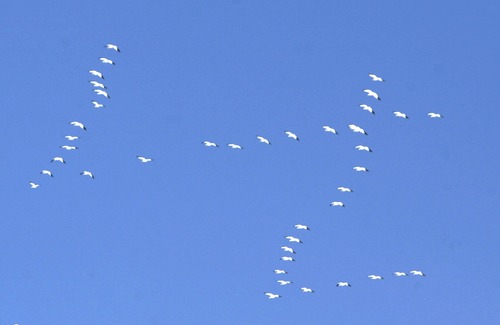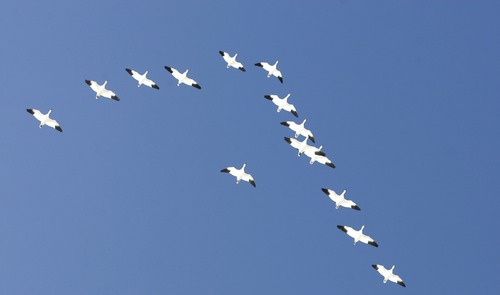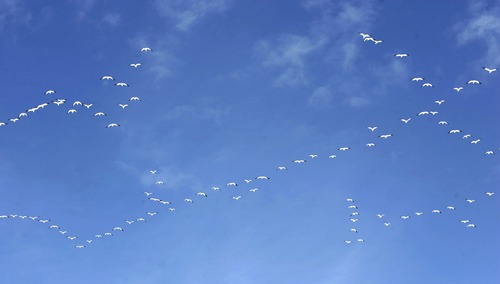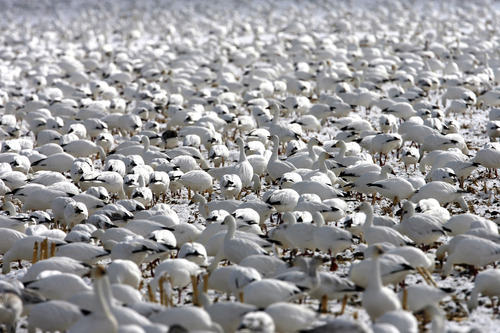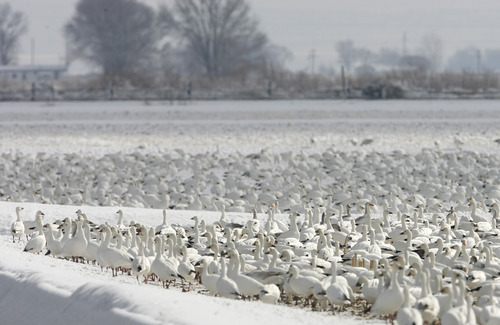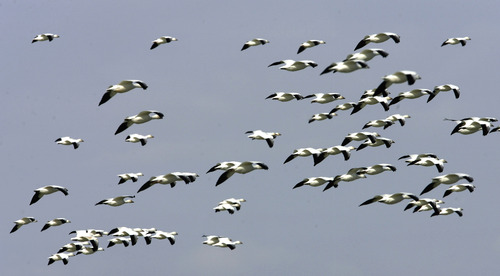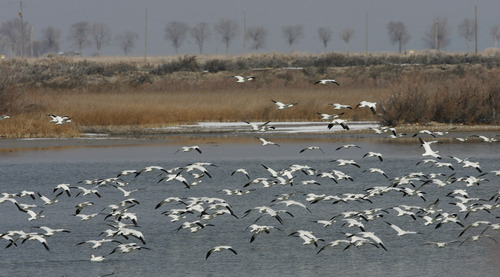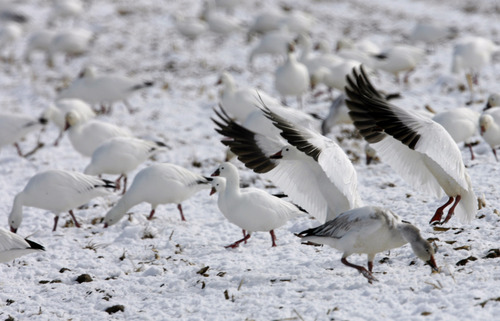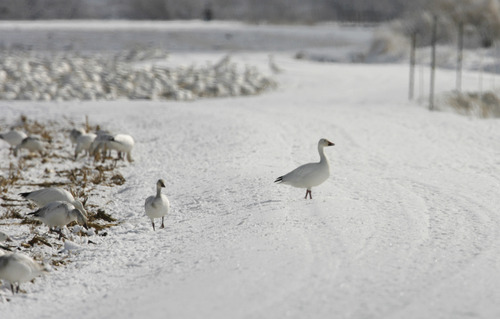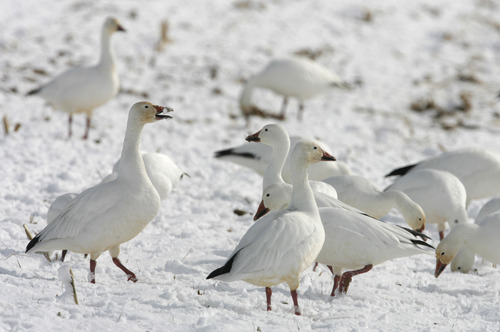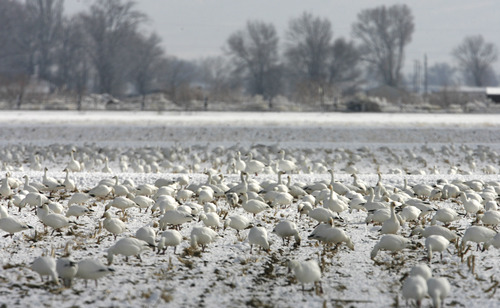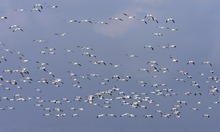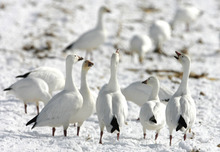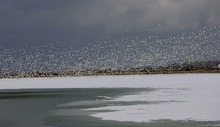This is an archived article that was published on sltrib.com in 2013, and information in the article may be outdated. It is provided only for personal research purposes and may not be reprinted.
It is not often that wildlife outnumber participants at viewing festivals, but it is a common occurrence at the annual Delta Snow Goose Festival each February.
State wildlife officials say as many as 20,000 geese may be visible during the free festival on Friday and Saturday near Gunnison Bend Reservoir west of Delta.
The festival, organized by the Delta Area Chamber of Commerce, has grown from humble beginnings into a major tourism event for the area. It is based on the annual spring migration of white geese — typically dominated by snow geese but also including Ross's geese — to their breeding grounds in the Arctic.
The flocks of migrating snow geese take a break during their trip at Gunnison Bend Reservoir and perhaps again a little farther north near the Bear River Migratory Bird Refuge.
Blair Stringham, migratory game bird coordinator for the Utah Division of Wildlife Resources (DWR), says some white/light geese head through Utah in the fall but most take a different route.
"They take a route more through California in the fall for some reason," Stringham said. "But they head back through Utah, and we get a chance to see them."
Bob Walters, watchable-wildlife coordinator for the DWR, says one of the most dramatic scenes involving snow geese is their daily departure from nearby fields to the reservoir, which usually takes place between 9 a.m. and 10:30 a.m.
"That's an exciting time to see and hear the geese," he said. "Then, anywhere from 4 to 6 p.m. they take off again and fly back to the fields. It's thrilling to be there when the geese take off."
Gunnison Bend Reservoir is mostly covered with ice, but wildlife officials say there should still be plenty of geese for the event.
Volunteers and state biologists will answer questions during the festival about snow geese and help people get a better look at the birds with binoculars and spotting scopes. Several will be available to help people Sunday after the festival has ended.
The spring migration not only lets people watch the geese but also hunt them. Snow geese in the Arctic have been pushing the limits of the available habitat for years.
"There are too many for the environment," Stringham said. "They are impacting all other bird species trying to nest in that area."
The midwinter waterfowl survey in the Pacific Flyway was about 1 million light geese — 800,000 snow geese and 200,000 Ross's geese. Utah hunters take an average of 3,000 birds during the light-goose season. This year, the light-goose north zone season began Monday and will run through March 10. The light-goose season outside of the north zone (which includes the area around Delta) is March 1-10.
Three thousand geese may not seem like a lot removed from a population of 1 million, but each one helps the habitat issues in the Arctic.
The spring hunts for light geese were popular when they first opened, but it wasn't long before hunters realized a lot of the birds were using private lands, which may be why the number of snow geese taken is low.
"We really encourage hunters to contact landowners before the hunt starts. Trespassing is an issue," Stringham said. "Contacting a landowner before usually leads to a better chance of accessing the property and a better chance of harvesting birds as well."
Snow Goose Festival
The festival is Friday and Saturday at Gunnison Bend Reservoir west of Delta and the Millard County Fairgrounds at 181 S. Manzanita Ave. Events include a 5K/10K run, skeet shoot, arts and crafts fair, quilt show and the "Dunk, Dunk Goose Water Plunge."
O Find out more information online. > deltagoosefestival.com


